The class agreed that the tilt of the container seemed to get the water to flow the most, but the wall of the container and its small size were of concern to us. We decided to build a better model of where a river would be, and this could hopefully gather more evidence to support the claim that there needs to be an angle in the river in order to get the water flowing in one direction.
So we built a landscape! Mrs. Brinza had an old tablecloth lying around, and we raised up part of the "land" by putting stuff under it to show how land isn't flat. We used orange cones, cups, and some cotton patting to show this. Then Mrs. Brinza made it rain!
So we built a landscape! Mrs. Brinza had an old tablecloth lying around, and we raised up part of the "land" by putting stuff under it to show how land isn't flat. We used orange cones, cups, and some cotton patting to show this. Then Mrs. Brinza made it rain!
We figured out a lot of information from this physical model. We gathered more evidence to support the idea that water flows downward, and we saw the water move faster in areas that were steeper. Water that gathered did so in places that were flat, and it didn't move there at all. Students were asked to explain their thinking by developing a model themselves.
From here, we're trying to figure out how this big idea connects to what we're trying to figure out...where our clean drinking water comes from. We know how water flows...so how does this all relate back to the concerns we had regarding the Chicago River and Lake Michigan? How can flow help us better understand this?
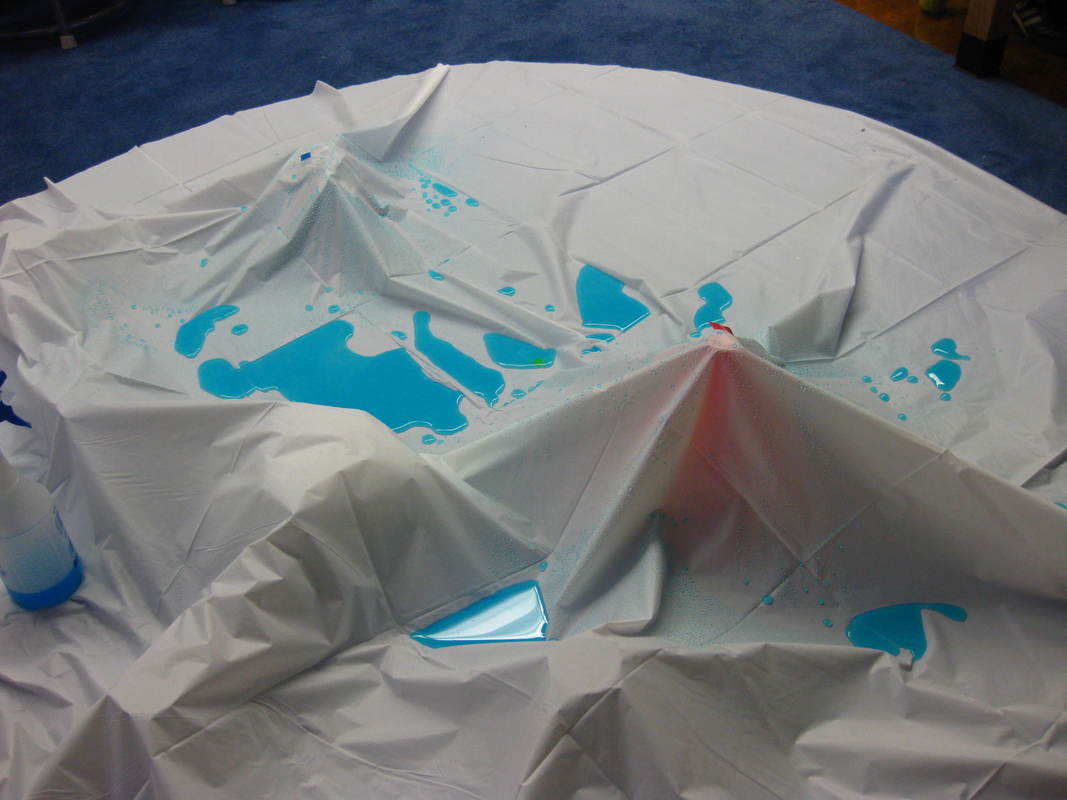
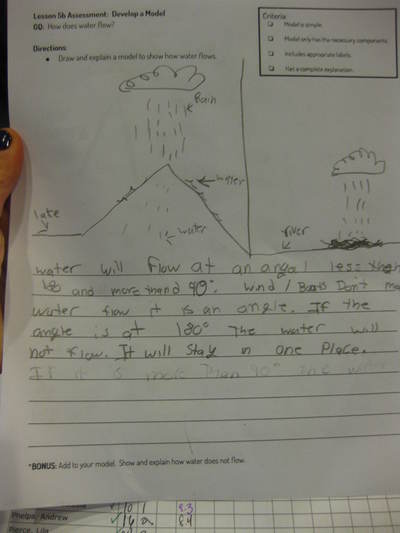
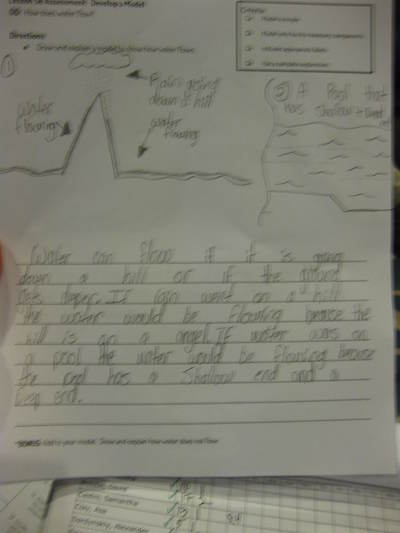
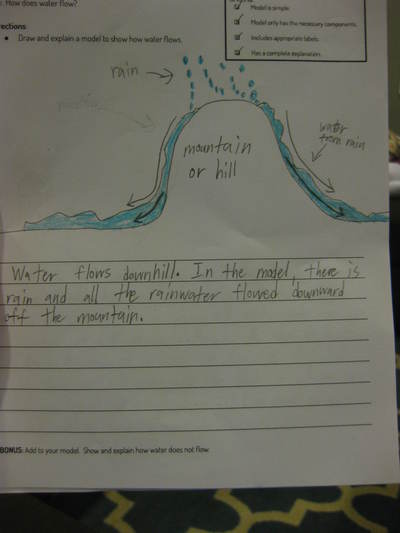

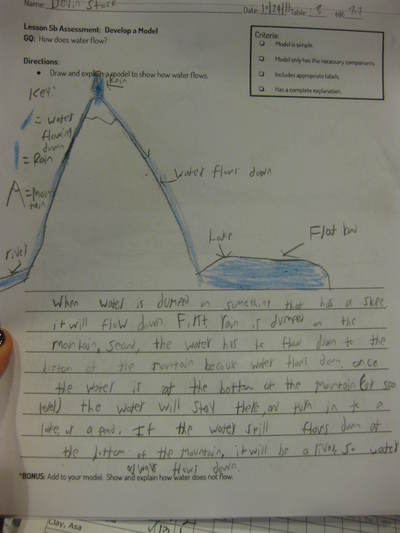
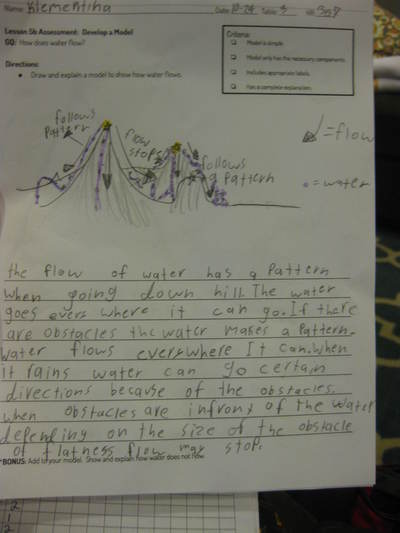
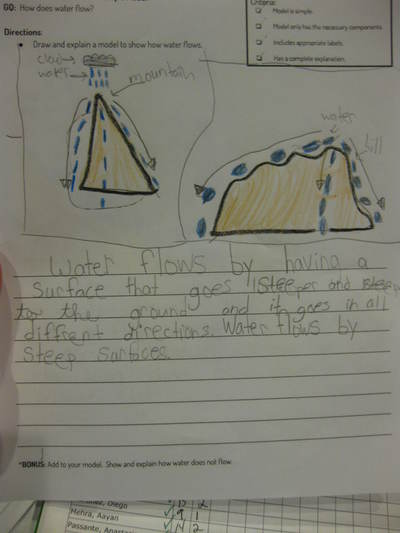
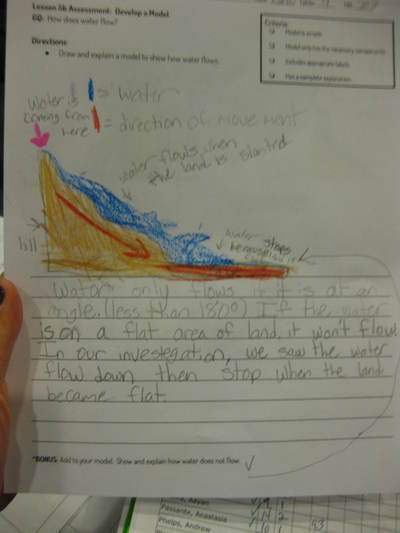
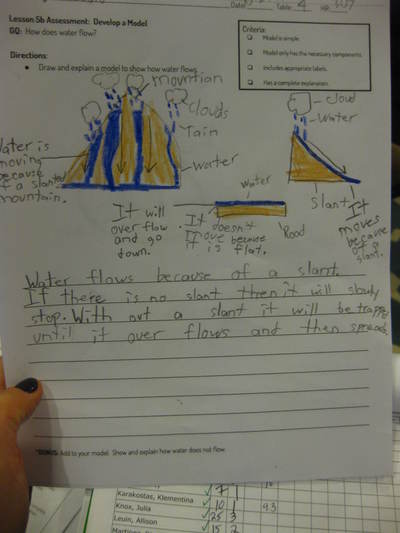
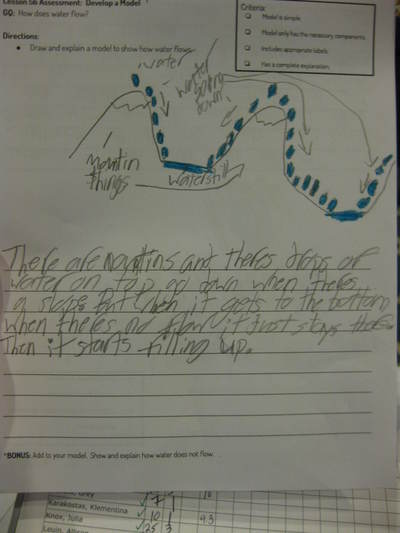
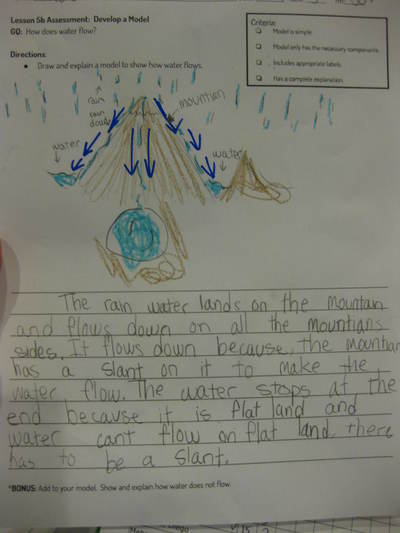
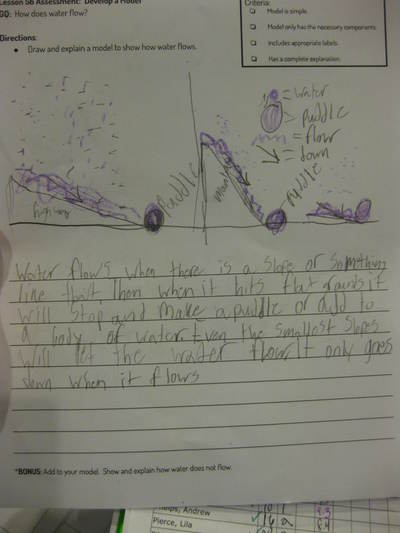
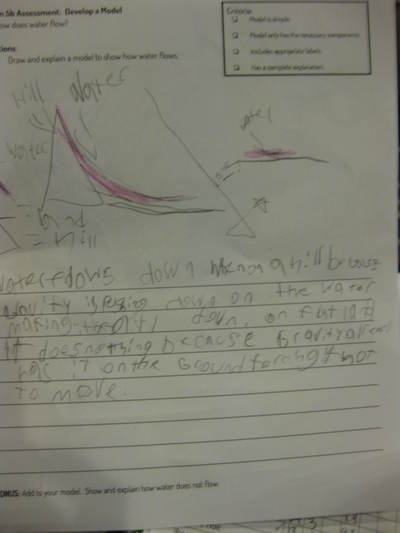
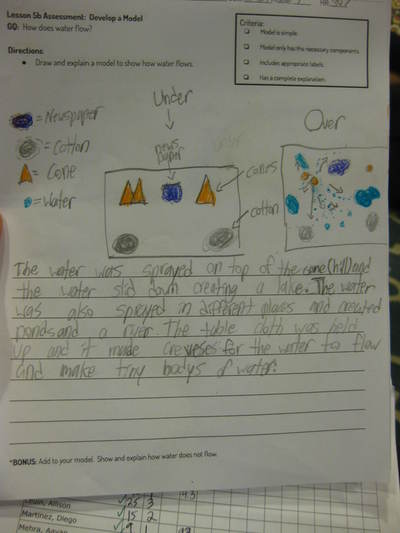
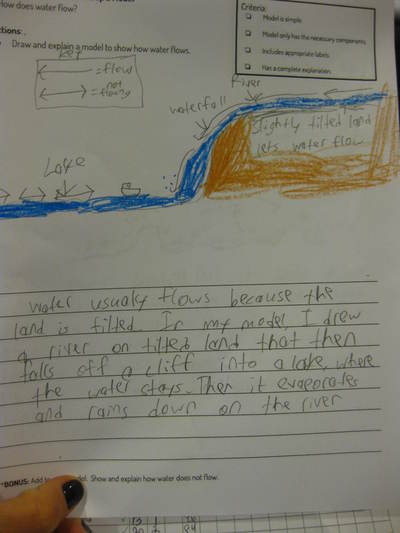
 RSS Feed
RSS Feed